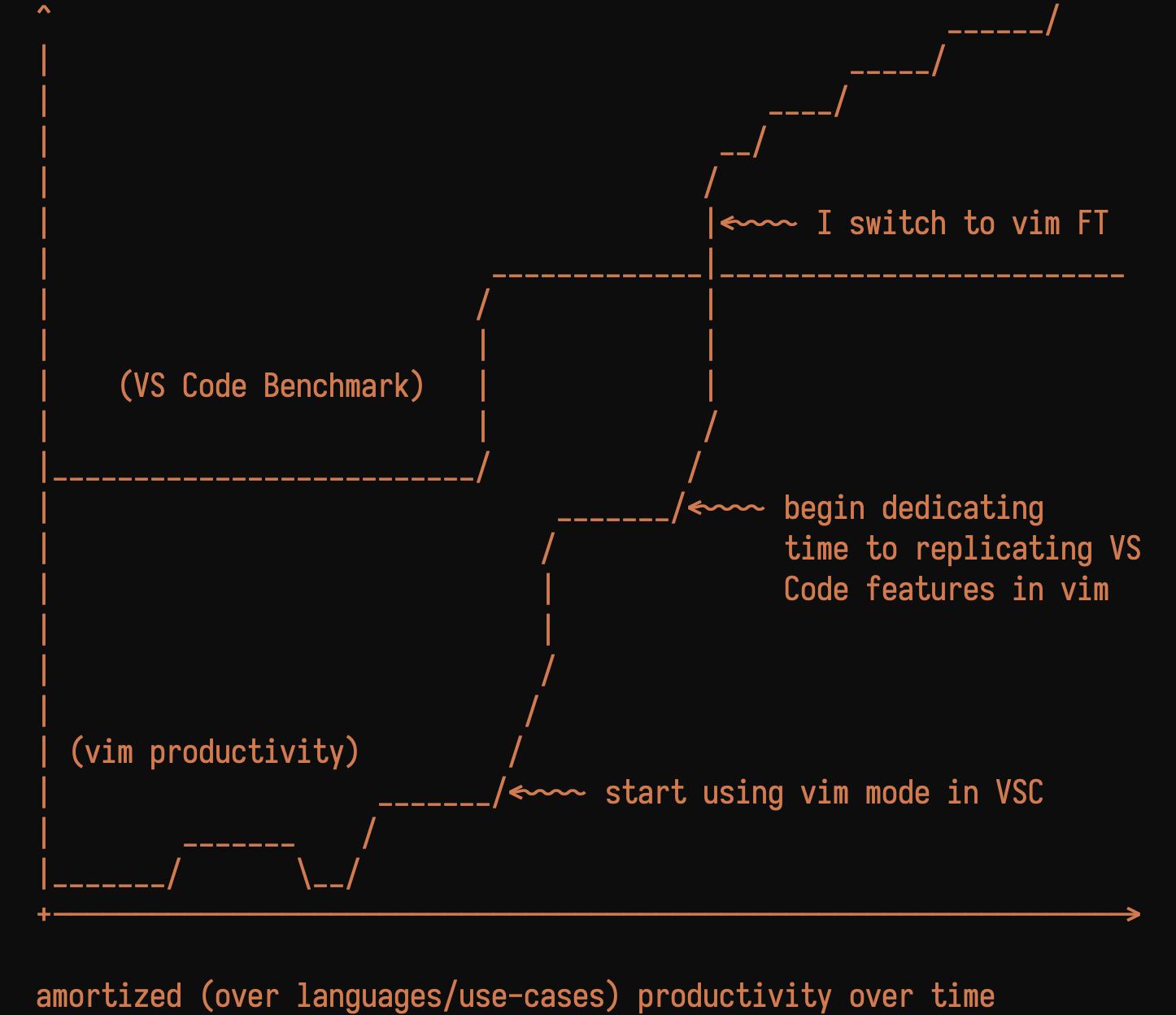

I started programming with vim in 2017, I’m still a bit new to the party.
But it’s a great party, and it might be an especially good one to join late.
My transition:
vimtutor on an airplane, sometime in
late 2016markdown ->
pdf with pandoc:
markdownmarkdown, leaning on
UltiSnips (to great reviews!)vim-mode in my IDE of choice (at the time,
VS Code)Go on and off in
vimvim
and UltiSnipsIt took me about 1.52 years to get to the final stage. It’s worth it!
Today (2022-12-06), my workhorse is a self-compiled version of
vim 9.0 with a few key plugins:
alerg and fd!)The full dot-file lives here here
Ideas that I recommend experimenting with:
*<esc>:%s//other_word/g is way fast.UltiSnips templates, especially for
“structured” documents like:
rg if
grep never clicked for you:
rg has an intuitive interface for beginners,grep in most common
situations.pandoc3:
Vim has been around for 30 years, and it is still getting better every year.
Betting on Vim being a competitive text editor in 2050 isn’t too far removed from betting on Linux being a competitive kernel, or PostgreSQL being a competitive RDBMS in 2050.
It’s a
Basically, there’s no shiny rug to be pulled here. It’s a rock. It might not be the shiniest or sharpest rock on any given day, but it’ll be here until I retire.
The decisive features to replicate were (1) search for filename (2) regex on file content (3) go to definition.↩︎
(You can probably do it in less time, if you care to: my pace was leisurely)↩︎
This website is little more than markdown files,
pandoc, a 10-line makefile, and some janky
bash scripts shipping generated files to an S3 bucket.
pandoc gets you 100% of the way there 80% of the time
(i.e. writing term papers, doing homework, design docs) and 80% of the
way there 20% of the time (i.e. writing a website).↩︎